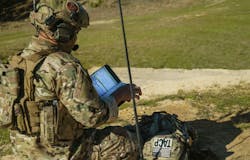DOD processes may undermine technology development like tactical radio communications for voice and data
WASHINGTON – Between 1996 and 2011, the U.S. military spent $6 billion to develop and field a new tactical radio. Even in the context of U.S. military spending, $6 billion is a big chunk of change. War on the Rocks reports. Continue reading original article
The Military & Aerospace Electronics take:
20 July 2020 -- By comparison, the Air Force spent approximately $3 billion to develop and procure the pathbreaking MQ-1 Predator unmanned aerial vehicle (UAV). The Predator ushered in a new era of drone warfare, whereas the tactical radio project was cancelled before it could produce a single radio.
Harris Communications (now L3Harris) was one of the companies that hoped to win the communications contract for this program. The leaders at Harris foresaw the enormous technological and program management challenges that awaited the winner. Harris didn’t win the contract, but that didn’t stop the company from taking advantage of the opportunity.
Harris invested $200 million of its own research and development dollars to develop a radio system with less ambitious performance goals and that would be unencumbered by unwieldy Pentagon acquisition regulations. Harris succeeded in 2008 with the PRC-117G radio, which could support a modest tactical voice and data network that has since become the workhorse standard for the Army and Marine Corps.
John Keller, chief editor
Military & Aerospace Electronics

